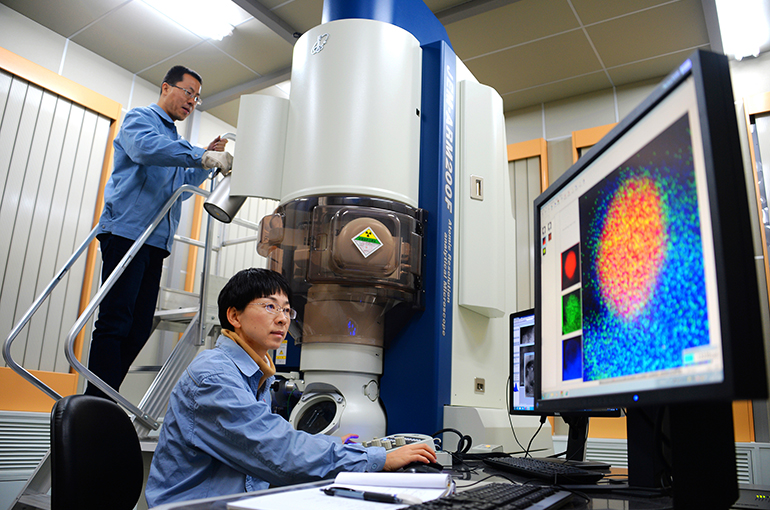 Green Jet Fuel Is Key to Cutting Emissions, But High Costs Remain a Big Hurdle, IATA Says
Green Jet Fuel Is Key to Cutting Emissions, But High Costs Remain a Big Hurdle, IATA Says(Yicai) June 9 -- Replacing regular jet fuel with sustainable aviation fuel is crucial for the decarbonization of the airline industry, but the steep production costs are still a major barrier to its widespread adoption, the International Air Transport Association said at its recent annual meeting.
“By 2025, the production of sustainable aviation fuel is expected to hit 2 million metric tons, but this will still only account for 0.7 percent of all the jet fuel used,” said IATA Director General Willie Walsh. “Even though that’s double the output in 2024, production will need to be scaled up exponentially in order to meet the industry’s commitment to reach net-zero emissions by 2050.”
Sustainable aviation fuel refers to eco-friendly fuel that meets aviation jet fuel standards and is processed from sources that contain synthetic hydrocarbons such as biomass and waste cooking oil. Compared to regular fossil fuels, green jet fuel can cut carbon emissions by up to 85 percent over its full lifecycle.
China has not made it mandatory for airlines to use sustainable aviation fuel yet, but the trend is clearly moving in that direction. The country’s 14th Five-Year Plan for the Green Development of Civil Aviation, which runs from 2021 to 2025, aims for sustainable aviation fuel consumption to reach more than 20,000 tons this year, with a total cumulative use of 50,000 tons by then.
A pilot sustainable aviation fuel program launched by the National Development and Reform Commission and the Civil Aviation Administration of China in September 2024 has already seen multiple Chinese airlines complete test flights. Starting March 19, all domestic flights out of major airports such as Beijing Daxing International Airport and Chengdu Shuangliu International Airport have begun routinely using fuel blended with 1 percent sustainable aviation fuel.
As green jet fuel-powered flights become more common, more Chinese companies are entering production. Sinopec’s Zhenhai Refining & Chemical, one of the first companies in China to develop and produce sustainable aviation fuel, has built the country's first sustainable aviation fuel production facility. And in the first half last year, Sinopec teamed up with France’s TotalEnergies to co-produce green jet fuel, with an annual production capacity of 230,000 tons.
Meanwhile, Henan Junheng Industry Group Biotechnology was given the green light from the aviation authority to sell its sustainable aviation fuel commercially, becoming the first private Chinese petrochemical company to do so. China now produces 350,000 tons of sustainable aviation fuel a year.
Cost Barrier
However, sustainable aviation fuel costs about 4.2 times that of regular jet fuel, according to estimates by the Montreal-based IATA. In the EU, where airlines are now required to blend in 2 percent sustainable aviation fuel, fuel suppliers are charging extra compliance fees which are making the fuel even more expensive.
Regular jet fuel prices are expected to drop in 2025, which would make sustainable aviation fuel seem even more expensive by comparison. The IATA predicts that the average price of jet fuel will tumble 13 percent this year to about USD86 per barrel, down from an average of USD99 in 2024.
At current prices, reaching net-zero carbon emissions by 2050 could cost the industry a staggering USD4.7 trillion, Walsh said. He called on fuel producers to ramp up output and urged governments around the world to introduce policies that would support the development of sustainable aviation fuels.
Expanding the production of sustainable aviation fuel will require a wider variety of feedstocks, said Xie Xingquan, IATA’s regional vice president of North Asia. In the next five years, about 80 percent of sustainable aviation fuel will likely come from hydroprocessed esters and fatty acids, including waste cooking oil and animal fats. But speeding up the use of other approved sources, such as agricultural waste, forestry residues and even municipal trash, could significantly boost production, he added.
Whether airlines can hit their carbon peak and neutrality goals depends on if the industry can provide an adequate supply of sustainable aviation fuel at affordable prices, aviation industry expert Lin Zhijie said. Right now, production capacity is limited and prices are too high. The costs of wind and solar energy were drastically reduced thanks to industrial policy support, and similar support should be extended to sustainable aviation fuel.
Editor: Kim Taylor